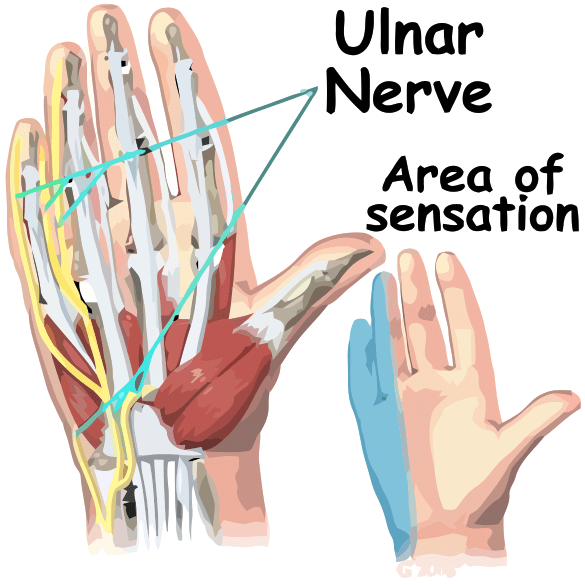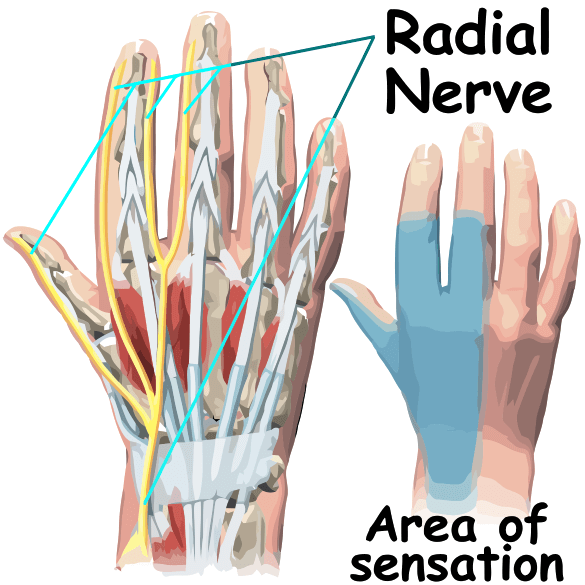Chronic Cycling Injuries: Heed the Warnings Or You'll Be Walking
A chronic injury is one that takes a while to develop and become noticeable. Usually such injuries happen because of overuse, misalignment, or pushing beyond one's ability. Overuse injuries primarily affect the cartilage which cushion the joints, the ligaments holding joints in place, or the tendons responsible for moving the muscles of a specific joint. However, chronic injuries can also occur to bones particularly if there is repetitive impact.
In cycling the most common reasons why these injuries happen are poor bike fitting, over-training, insufficient rest, and “going out too hard”. One trap many cyclists fall into is believing that since it is a gentle sport compared to things like running, there's little chance of injury. But as many cyclists discover, just because biking is low impact doesn't mean the musculoskeletal system can't be overstressed.
Hands
Our hands have an abundance of nerves which is what gives us our dexterity and sensitivity. Unfortunately, when we hold our hands in the same position for long periods of time or when the same nerves are constantly compressed such as when holding onto handlebars, nerve damage can result. The first warning signs are numb fingers while riding or after a ride, which usually returns to normal when the ride is done, or shortly thereafter. If the condition worsens the numbness will persist for longer periods after the ride and can even become a permanent disability.
In some cases the blood vessels in our hands may also become compressed further complicating the injury. Be aware that beyond a certain level of damage, healing may be impossible. That is, if there is death to the nerves being affected there is no way to “revive” or replace them.


To avoid chronic hand injuries:
- Make sure you are not leaning too far forward as this increases the pressure bearing down on the hands. Sometimes this is leaning is a result of the bike being too big and therefore the top tube is too long.
- Wear high quality gloves which will help absorb some of the pressure and impact while riding.
- Change hand positions frequently.
- Use thick bar tape or thick handlebar grips.
- Use aerobars on long rides if it's safe to do so and you have the right kind of bike.
- Adjust the angle of the handlebars by slightly tilting them up or down.
- Raise or lower the handlebars slightly.
- Change the type of handlebars. For example, if the problem is serious enough you may choose to put on straight bars instead of drop bars.
- If you have drop bars consider getting wider ones.
- If pain persists, reduce your riding hours.
- Seek professional help, e.g. physiotherapy, before any injury gets worse.
On drop bars it is usually the two outermost fingers affected, simply because of the ulnar nerves that are compressed. However, on straight bars, it is usually the innermost fingers and thumb affected, with the radial nerves being compressed.
Knees
Knee injuries can be a big problem for many cyclists for the simple reason that if your knees hurt it's almost impossible to ride.
Usually knee injuries are caused by:
- A seat that is too low which forces the knee to bend too much.
- A seat that is too high which forces the knee into a locking position with every rotation.
- A seat that is too far forward or too far back which places the knee at a compromising angle.
- Cleats that are too far forward or too far back on the shoe.
- Cleats that are angled incorrectly on the shoe putting the lower leg into an unnatural medial or lateral angle resulting in stress on the knee.
- A pre-existing condition that is simply being aggravated by cycling.
A proper bike fitting should fix all of the above, except for a pre-existing condition. If you do have a pre-existing condition you should seek out physiotherapy and limit your riding until it is healed.
Shoulders
Shoulder injuries usually occur when there is overreach with the hands due to the bike being too large or the bars too far from the saddle. For a few minutes it's OK, but for long rides the shoulders will have to deal with pressure on areas that aren't designed to withstand it. Again, a proper bike fit is vital. Stretching and rotator cuff shoulder exercises may help reduce stiffness after a ride, but it's not a cure for an improper fit.
As a side note, be aware that shoulder injuries, broken clavicle or dislocation, are the most common injuries in cycling falls. These injuries occur because instinctively you will put your arm out to break a fall and the shoulder will have to absorb most of the force.
Hip
Hip injuries usually occur due to a saddle that is too high. In this position the hips are forced to sway side-to-side with every stroke. The hips are simply not designed to move this way over and over again, and after a while the joint will swell up and nerve damage may occur. Get a proper bike fit and check (and make note of) your saddle height. This injury can be quite painful and can take a long time to heal.
Back
Back soreness will almost always occur because the riding is leaning too far forward or the bar is too low. Contributing factors might be weak or stiff back muscles. As you've probably guessed it, proper bike fit is vital. But the rider should also consider strength and stretching exercises specific for the back. On long rides, dismount occasionally and do some light stretching.
Neck
A sore neck is more common with triathlon or road bikes and will usually occur if your handlebars forcing you to constantly work at keeping your head up. Or, you have the bad habit of trying to keep your head too high rather than looking up with your eyes. Check your bar height, do some light stretching before and after your ride, and consider taking a break during a long ride for some additional stretching.
Muscles
Sore muscles may be an indication that you are working hard. This may sound good, however, if this soreness persists for days after riding you are probably over-training and you are causing some serious damage to tissue. Muscle soreness should only be present for a few minutes after a really hard ride. Sore muscles may also get sore a day or two after exercising unused muscles, but this should not last more than 3-4 days, with the soreness decreasing every day. Rest, stretching, and proper nutrition can all help with alleviating muscles soreness.
And Again… Bicycle Fit
The importance of proper bike fit shouldn't be underestimated. It is something most riders take for granted and consider only after an injury. Professionals who are involved in bike fitting are usually trained in kinesiology with a specific bike fitting certification. Ask for it at your local bike shop. For more info on bike fitting check out this piece.



Leave a Reply